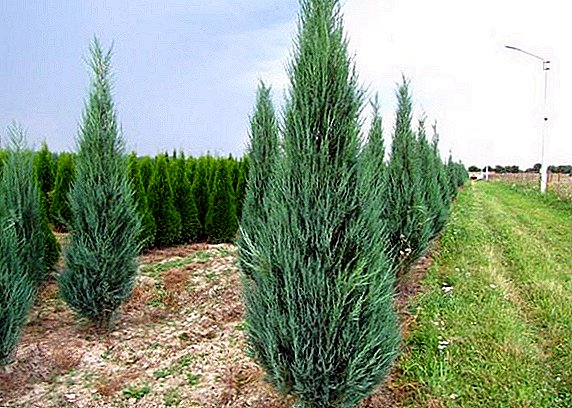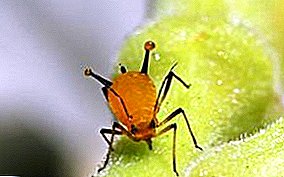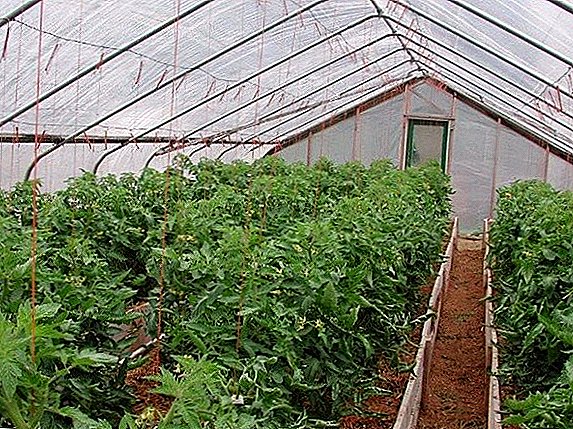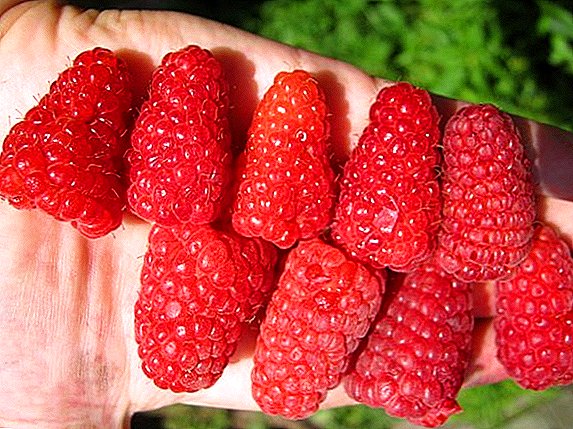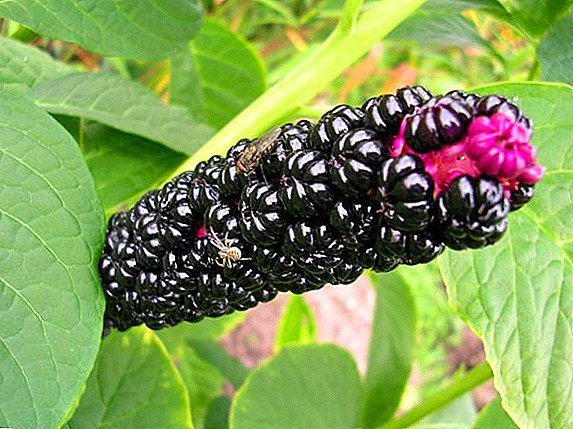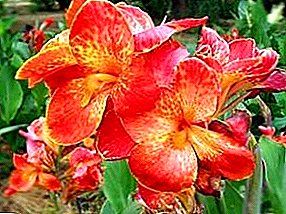 Fittonia is an exotic ornamental plant that can be seen on closed balconies or window sills of offices, private houses and apartments. This flower has gained wide popularity due to the beautiful and unusual veins on the leaves, contrasting with their surface. In this article we will talk in detail about the appearance of the fittonia mix and care for it.
Fittonia is an exotic ornamental plant that can be seen on closed balconies or window sills of offices, private houses and apartments. This flower has gained wide popularity due to the beautiful and unusual veins on the leaves, contrasting with their surface. In this article we will talk in detail about the appearance of the fittonia mix and care for it.
Description
Fittonia is a member of the Acanta family, in which there are 10 species of plants. Fittonia mix is not a separate type of decorative flower, but a kind of "assorted" from different species. The mix is made with a decorative purpose in order to give the room design a special beauty and color range.
Flower mixes can be created from 3, 4, 5 or more types of fittonium. Since these plants are related, their care is identical, and they can grow without any problems in one small volume of soil.
Did you know? Decorative plants got their name in honor of two English sisters - Elizabeth and Sary-Maria Fitton, who wrote the world's first botany textbook, which became classic.

In the wild, these exotic flowers are found in the rain forests of South America. Fittonia - perennial herbaceous plants with branched and densely pubescent stems up to 10 cm in height. The root system is superficial, the shoots are densely spreading out on the surface of the earth (they can take roots in nodes without any problems).
The leaves have an oval-elliptical shape and are formed on small petioles, reaching a length of 6-10 cm. The pubescence on the leaves is absent. They are opaque and have bright streaks of different colors, clearly distinguished from the surface.
Your house will be beautifully decorated with indoor plants such as tulip geranium, anthurium, zephyranthes, bevyestra and coral, spathiphyllum, nematantus, radermahera, nematanthus, kufeya, crossander, adenium, alokaziya, guzmaniya, gloriosa, drimyopsis iest, estroi ewe, adenium, alokaziya, guzmania, gloriosa, driemiopis, ishrie, and austerium, adenium, alokaziya, guzmaniya, gloriosa, drimeyopsis, an astra and vriezii.
The flowers of this plant do not represent decorative value. They are collected in a small spike, painted in sunny yellow color.
Care
If you want the fittonia mix to delight you with its beauty and decoration, you should properly care for it. 
The main recommendations for the care of a South American beauty:
- Temperature mode. In the summertime, the room where the flower is contained must have a temperature between 24-27 ° C. In winter, the temperature should vary from 18 to 20 ° C.
In winter, it is impossible to prevent a sharp decrease in temperature, as an exotic plant can get sick. Sudden temperature fluctuations with a constant draft will cause the foliage to fall. And remember that fittonia is an indoor flower. It adapts to a specific microclimate, so the plant is not recommended to take out on the street, even in summer.
- Lighting. South American flower prefers good lighting. Plant pots are best placed on the windowsills of the west or east side.
If you decide to place the fittonia mix on the south side, then it is best to move the pot into the depths of the room so that direct sunlight does not fall on the leaves all the time (otherwise the decorative effect may decrease significantly). During the winter period, there will not be enough daylight for fittonia, therefore it is necessary to purchase special fluorescent lamps.

- Watering. The soil in the flower pot should be constantly wet, otherwise the plant will begin to shed its leaves. But if irrigation is carried out too often, putrid processes in the root system may begin. Experts recommend watering fittonia immediately after the topsoil dries. In winter, you need to water a few days after the top layer is dry. Water mix fittonium in the summer should be 3-4 times a week (indicative data), in the winter - 2-3 times less.
- Humidity and spraying. Spray the leaves of the decorative mix should be daily, as fittons in the natural habitat are accustomed to high humidity. Spraying should be carried out at least once a day, and preferably twice in the morning and evening.
To minimize the cost of time, you can purchase a special installation that creates artificial fog.
- Ideal soil for a flower. The substrate for an exotic plant should be loose and rich in various useful substances. It is best if the soil consists of hardwood, a mixture of peat and river sand. Composition for Fitton mix can be purchased at a specialty store or do it yourself.

- Top dressing and fertilizer. Flower dressings can be purchased at garden and decorative stores. Too often feeding fittonia should not be, as this may adversely affect their health. Often, the manufacturer specifies the rate of fertilizer on the package. It is best to reduce the recommended dosage by half. In winter, you need to make dressing no more than once a month, during the rest of the year - 2 times a month. It is also necessary to use liquid fertilizers that are applied to the leaves. They nourish the flower with nutrients and protect it from parasites and pests.
- Crop. Anti-aging pruning fittonii held in March in several stages. It should gradually cut off a few leaves, thanks to this the rate of growth and development of the shoots will increase. In addition, the shoots need to pinch, because over time the lower part of the plant becomes bare. It is best to carry out pruning in three stages at weekly intervals so as not to cause a fittonia mix of significant harm.
Do not forget that the fittonia mix should not be located on a window sill with an open window, near heaters with a blower or in a room with large drafts. Such a microclimate adversely affects the South American beauty, and she may eventually begin to drop leaves.
Important! Abundant watering Fittonia mix along with strong drafts (in winter) can lead to the death of the flower.
Transplantation and reproduction
Fittonia mix grows rapidly and rapidly, so it needs regular transplants that should be performed annually. Transplantation is best done in March or April. If the plant is more than 5 years old, then it should be replanted 1 time in 3 years.
The soil for transplanted plants should consist of humus, river sand and peat in proportions of 1: 1: 3. At the bottom of the pot it is necessary to build a drainage of expanded clay or broken brick. You can also add wet moss, which will maintain optimum moisture in the soil.
Immediately after purchase, the plant is better not to replant. He needs some time to adapt.
There are three main types of breeding fittonia:
- Reproduction by division. During transplantation works, the bush can be divided into several parts and planted in different pots. It should be very careful not to damage the root system. If you have several types of fittons that grow in separate containers, you can separate them one by one and put them in one pot. So you get a floral and decorative mix.
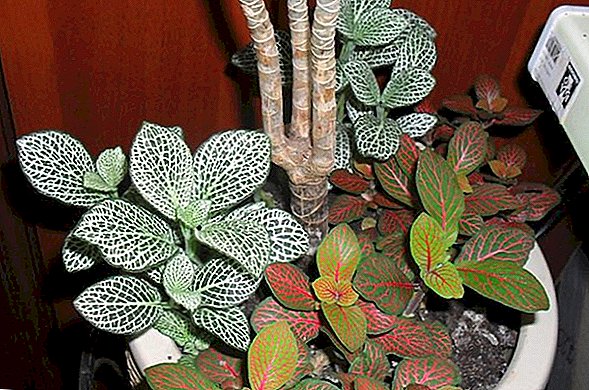
- Reproduction by cuttings. If you want to propagate the plant by cuttings, then this is best done in February and March. To do this, separate the cutting with three to five leaves and place the cut end in the sand. Remember that for normal rooting of the stalk its length should not exceed 8 cm. Put the stalk should be covered with a jar for about a month. Periodically it is necessary to remove the jar, then water and spray the cutting. The separated part of the plant can also be propagated in water, the layer of which should not exceed 1 cm.
Cuttings are also propagated by houseplants such as orchid, crossander, ficus, dracaena, azalea, petunia, dieffenbachia and royal geranium.
The temperature in the room during reproduction fittonium should be at the level of 26-27 ° С. When the stalk has strong roots, it can be transplanted into the prepared soil.
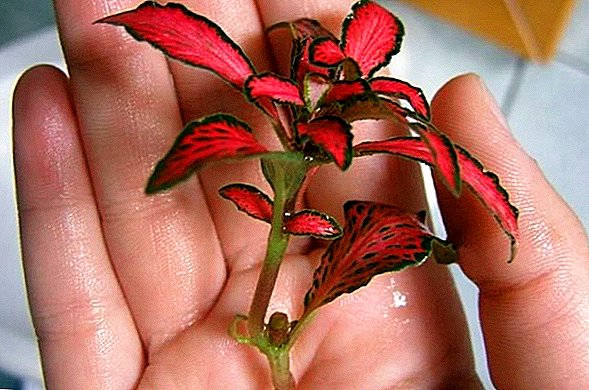
- Reproduction by layering. Earlier we said that the shoots can take root in the nodes. It is in this way that fittonia most often breeds in the wild. In room conditions, it can also multiply itself by layering, but it is better to help her with this. Dig a leaf-bare flower from the leaves, and wait for it to take root. After that, carefully separate the layers from the mother plant and transplant in a new pot.
Did you know? Bioenergy think that by putting in the room there is a pot with a fittonia mix, you can get rid of evil intentions and irritability.
Diseases and pests
Sick this plant rarely. This usually happens with improper care or with the defeat of parasites. The most common pests of fittonia are scale insects, mealybugs, thrips, spider mites.
The most characteristic sign of the appearance of scale insects is the presence of black spots on the leaves. To fight with the insets, one should use the "Aktellik" organophosphate insecticide. Spider mite can appear only in excessively dry room.
If you ignore moisture control and forget about spraying a flower, then a tick can harm it. A characteristic feature of this pest is the presence of a spider web on the shoots and leaves. In the fight against it will help insecticides "Derris" or "Fitoverm."
If the plant is struck by thrips, then on its leaves will appear characteristic yellow or colorless spots - traces of the places where the insects fed on the flower sap of the flower. You can fight thrips with karbofos, Vertimek or Intavira.  Mealybugs or furry lice feed on the sap of the shoots and severely inhibit the plant in growth. The first sign of these parasites is vatoobrazny wax coating on the shoots. It is possible to overcome mealybugs with the help of "Biotlin" or "Mospilan".
Mealybugs or furry lice feed on the sap of the shoots and severely inhibit the plant in growth. The first sign of these parasites is vatoobrazny wax coating on the shoots. It is possible to overcome mealybugs with the help of "Biotlin" or "Mospilan".
In addition to pests, the plant may be subject to various diseases due to improper care or improper indoor climate. The most characteristic signs and causes of diseases:
- If the plant is fully or partially yellowed, this is the first sign of overly intense and abundant watering.
- Leaves can become shriveled due to bright and long-lasting lighting. In addition, this factor is also affected by too low air humidity.
- If the stems have become bare, then the plant needs rejuvenation. In this case, one should not panic, since such a process is natural.
- Leaves can lose their color due to an overabundance of solar or artificial lighting, but a lack of light can also lead to discoloration.
- The tips of fittonii can become brown in color due to a lack of fertilizer in the soil.

Important! FIt will be beneficial if you put a container with water or an air humidifier next to it.
Now you know how beautiful the fittonia mix is, how to care for it at home and how to deal with possible pests and diseases. Propagate this flower and give it to relatives and friends, because it can bring exoticism and atmosphere of South American forests to every home.







